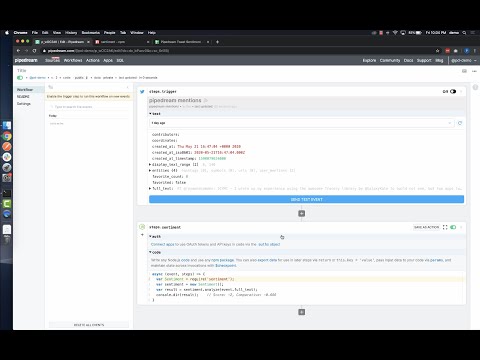What do you want to automate
with Google Sheets and Pikaso?
Prompt, edit and deploy AI agents that connect to Google Sheets, Pikaso and 3,000+ other apps in seconds.
Trusted by 1,000,000+ developers from startups to Fortune 500 companies
Popular Ways to Connect Google Sheets with Pikaso#
Popular Google Sheets and Pikaso Triggers#
Emit new event each time a comment is added to a spreadsheet.
Emit new event each time a row or rows are added to the bottom of a spreadsheet.
Emit new event each time a row or rows are added to the bottom of a spreadsheet.
Emit new event each time a row or cell is updated in a spreadsheet.
Popular Google Sheets and Pikaso Actions#
Add a single row of data to Google Sheets. See the documentation
With the Pikaso API you can automate creating screenshots from tweets. See the docs for more information
Add multiple rows of data to a Google Sheet. See the documentation
Get all values or values from a range of cells using A1 notation. See the documentation
Create conditional formatting with color scales or custom formulas. See the documentation
Overview of Google Sheets#
The Google Sheets API allows for the creation, reading, updating, and deletion of data within Google Sheets, enabling a robust platform for spreadsheet management and data manipulation. Through Pipedream, you can craft serverless workflows that respond to various triggers, such as webhook events, emails, or scheduled times, to interact with Google Sheets. This synergy can automate reporting, synchronize data across applications, manage inventory, track leads in a CRM, or even conduct survey analysis by updating and retrieving sheet data on the fly.
Connect Google Sheets#
import { axios } from "@pipedream/platform"
export default defineComponent({
props: {
google_sheets: {
type: "app",
app: "google_sheets",
}
},
async run({steps, $}) {
return await axios($, {
url: `https://www.googleapis.com/oauth2/v1/userinfo`,
headers: {
Authorization: `Bearer ${this.google_sheets.$auth.oauth_access_token}`,
},
})
},
})
Overview of Pikaso#
The Pikaso API lets you capture and customize screenshots of tweets with defined styles, sizes, and themes. Harness this power within Pipedream to automate the process of capturing tweet images for reporting, archiving, or sharing across various platforms. Think of it as a bridge between Twitter's textual content and visually-oriented platforms or documents.
Connect Pikaso#
import { axios } from "@pipedream/platform"
export default defineComponent({
props: {
pikaso: {
type: "app",
app: "pikaso",
}
},
async run({steps, $}) {
return await axios($, {
url: `https://pikaso.me/api/v1/me`,
auth: {
username: `${this.pikaso.$auth.token}`,
password: `${this.pikaso.$auth.token_secret}`,
},
})
},
})
Related Videos#



Community Posts#


